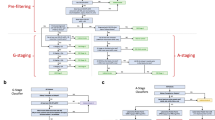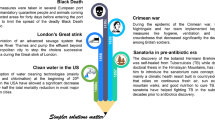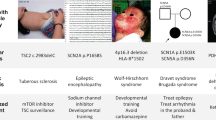Abstract
Personalized medicine is a new framework for medical care that involves modelling and simulation of a disease on the basis of its underlying mechanisms. This strategy must replace the 20th century paradigm of defining disease by pathology or associated signs and symptoms and conducting outcomes research that is based on the presence or absence of the disease syndrome. New technologies, including next-generation sequencing, the 'omics' and powerful computers provide massive amounts of accurate data. However, attempts to understand complex disorders by applying these new technologies within the 20th century framework have failed to produce the expected medical advances. To help physicians embrace a paradigm shift, the limitations of the old framework and major advantages of the new framework must be demonstrated. Chronic pancreatitis is an ideal complex disorder to study to consider the pros and cons of the two frameworks, because the pancreas is such a simple organ for disease modelling, and the advantages of personalized medicine are so profound.
This is a preview of subscription content, access via your institution
Access options
Subscribe to this journal
Receive 12 print issues and online access
$209.00 per year
only $17.42 per issue
Buy this article
- Purchase on Springer Link
- Instant access to full article PDF
Prices may be subject to local taxes which are calculated during checkout


Similar content being viewed by others
References
Kuhn, T. S. The Structure of Scientific Revolutions 1st edn (University of Chicago, Chicago, 1962).
Committee on a Framework for Development a New Taxonomy of Disease; National Research Council. Toward Precision Medicine: Building a Knowledge Network for Biomedical Research and a New Taxonomy of Disease. (National Academies Press, Washington, DC, 2011).
Whitcomb, D. C. Going MAD: development of a “matrix academic division” to facilitate translating research to personalized medicine. Acad. Med. 86, 1353–1359 (2011).
Flexner, A. Medical education in the United States and Canada: A report to the Carnegie Foundation for the advancement of teaching (Boston, Mass, 1910).
Etemad, B. & Whitcomb, D. C. Chronic pancreatitis: diagnosis, classification, and new genetic developments. Gastroenterology 120, 682–707 (2001).
Steer, M. L., Waxman, I. & Freedman, S. Chronic pancreatitis. N. Engl. J. Med. 332, 1482–1490 (1995).
Pao, W. & Girard, N. New driver mutations in non-small-cell lung cancer. Lancet Oncol. 12, 175–180 (2011).
Russnes, H. G., Navin, N., Hicks, J. & Borresen-Dale, A. L. Insight into the heterogeneity of breast cancer through next-generation sequencing. J. Clin. Invest. 121, 3810–3818 (2011).
Friess, H. et al. Identification of disease-specific genes in chronic pancreatitis using DNA array technology. Ann. Surg. 234, 769–778 (2001).
Shrikhande, S. V. et al. Comparison of histological features and inflammatory cell reaction in alcoholic, idiopathic and tropical chronic pancreatitis. Br. J. Surg. 90, 1565–1572 (2003).
Whitcomb, D. C. Mechanisms of disease: Advances in understanding the mechanisms leading to chronic pancreatitis. Nat. Clin. Pract. Gastroenterol. Hepatol. 1, 46–52 (2004).
Evidence-Based Medicine Working Group. Evidence-based medicine. A new approach to teaching the practice of medicine. JAMA 268, 2420–2425 (1992).
Wyer, P. C. & Silva, S. A. Where is the wisdom? A conceptual history of evidence-based medicine. J. Eval. Clin. Pract. 15, 891–898 (2009).
Krishna, R. Model-based benefit-risk assessment: can Archimedes help? Clin. Pharmacol. Ther. 85, 239–240 (2009).
Eddy, D. M. et al. Individualized guidelines: the potential for increasing quality and reducing costs. Ann. Intern. Med. 154, 627–634 (2011).
Witte, J. S. Genome-wide association studies and beyond. Annu. Rev. Public Health 31, 9–20 (2010).
Anderson, C. A. et al. Meta-analysis identifies 29 additional ulcerative colitis risk loci, increasing the number of confirmed associations to 47. Nat. Genet. 43, 246–252 (2011).
Franke, A. et al. Genome-wide meta-analysis increases to 71 the number of confirmed Crohn's disease susceptibility loci. Nat. Genet. 42, 1118–1125 (2010).
Wheeler, E. & Barroso, I. Genome-wide association studies and type 2 diabetes. Brief. Funct. Genomics 10, 52–60 (2011).
Voight, B. F. et al. Twelve type 2 diabetes susceptibility loci identified through large-scale association analysis. Nat. Genet. 42, 579–589 (2010).
DePristo, M. A. et al. A framework for variation discovery and genotyping using next-generation DNA sequencing data. Nat. Genet. 43, 491–498 (2011).
McKernan, K. J. et al. Sequence and structural variation in a human genome uncovered by short-read, massively parallel ligation sequencing using two-base encoding. Genome Res. 19, 1527–1541 (2009).
Whitcomb, D. C. & Ermentrout, G. B. A mathematical model of the pancreatic duct cell generating high bicarbonate concentrations in pancreatic juice. Pancreas 29, E30–E40 (2004).
Park, H. W. et al. Dynamic regulation of CFTR bicarbonate permeability by [Cl-]i and its role in pancreatic bicarbonate secretion. Gastroenterology 139, 620–631 (2010).
Schneider, A. et al. combined bicarbonate conductance-impairing variants in CFTR and SPINK1 variants are associated with chronic pancreatitis in patients without cystic fibrosis. Gastroenterology 140, 162–171 (2011).
Chen, J. M. & Férec, C. Chronic pancreatitis: genetics and pathogenesis. Annu. Rev. Genomics Hum. Genet. 10, 63–87 (2009).
Whitcomb, D. C. Genetic aspects of pancreatitis. Annu. Rev. Med. 61, 413–424 (2010).
Yadav, D. et al. Alcohol consumption, cigarette smoking, and the risk of recurrent acute and chronic pancreatitis. Arch. Intern. Med. 169, 1035–1045 (2009).
Whitcomb, D. C. Hereditary pancreatitis: new insights into acute and chronic pancreatitis. Gut 45, 317–322 (1999).
Yadav, D. & Whitcomb, D. C. The role of alcohol and smoking in pancreatitis. Nat. Rev. Gastroenterol. Hepatol. 7, 131–145 (2010).
Deng, X. et al. Chronic alcohol consumption accelerates fibrosis in response to cerulein-induced pancreatitis in rats. Am. J. Pathol. 166, 93–106 (2005).
Nordback, I. et al. The recurrence of acute alcohol-associated pancreatitis can be reduced: a randomized controlled trial. Gastroenterology 136, 848–855 (2009).
Talamini, G. et al. Smoking cessation at the clinical onset of chronic pancreatitis and risk of pancreatic calcifications. Pancreas 35, 320–326 (2007).
Van Goor, F. et al. Correction of the F508del-CFTR protein processing defect in vitro by the investigational drug VX-809. Proc. Natl Acad. Sci. USA 108, 18843–18848 (2011).
Morinville, V. D., Lowe, M. E., Elinoff, B. D. & Whitcomb, D. C. Hereditary pancreatitis amlodipine trial: a pilot study of a calcium-channel blocker in hereditary pancreatitis. Pancreas 35, 308–312 (2007).
Shimosegawa, T. et al. International consensus diagnostic criteria for autoimmune pancreatitis: guidelines of the International Association of Pancreatology. Pancreas 40, 352–358 (2011).
Mullady, D. K. et al. Type of pain, pain-associated complications, quality of life, disability and resource utilisation in chronic pancreatitis: a prospective cohort study. Gut 60, 77–84 (2011).
Clarke, B. et al. Endoscopic therapy is effective for patients with chronic pancreatitis. Clin. Gastroenterol. Hepatol. http://dx.doi.org/10.1016/j.cgh.2011.12.040.
Sutton, J. M. et al. Total pancreatectomy and islet cell autotransplantation as a means of treating patients with genetically linked pancreatitis. Surgery 148, 676–685 (2010).
Bellin, M. D. et al. Quality of life improves for pediatric patients after total pancreatectomy and islet autotransplant for chronic pancreatitis. Clin. Gastroenterol. Hepatol. 9, 793–799 (2011).
LaRusch, J., Barmada, M. M., Solomon, S. & Whitcomb, D. C. Whole exome sequencing identifies multiple, complex etiologies in an idiopathic hereditary pancreatitis kindred. JOP 13, 258–262 (2012).
Acknowledgements
The author thanks the following people for critical review of the manuscript and helpful discussion: Michelle Kienholz, Christopher Langmead PhD, Mark S. Roberts MD MMP and Adam Slivka MD PhD. Work from the author's group discussed in this publication was supported by the following: National Institutes of Health (NIH) DK054709, DK061451, DK077906, the University of Pittsburgh Genomics and Proteomics Core Laboratory and the National Center for Research Resources (NCRR), a component of the NIH Roadmap for Medical Research (UL1 RR024153), the UPCI Clinical Genomics Immunoproteomics and Sequencing Facility (NIH P30CA047904), The Frieda G. and Saul F. Shapira BRCA Cancer Research Program and the Wayne Fusaro Pancreatic Cancer Research Fund (DCW).
Author information
Authors and Affiliations
Ethics declarations
Competing interests
D. C. Whitcomb owns stocks in Ambry Genetics and also the US patent 6406846 entitled “Method for determining whether a human patient is susceptible to hereditary pancreatitis, and primers therefore”, which has been licensed and provides royalty income.
Rights and permissions
About this article
Cite this article
Whitcomb, D. What is personalized medicine and what should it replace?. Nat Rev Gastroenterol Hepatol 9, 418–424 (2012). https://doi.org/10.1038/nrgastro.2012.100
Published:
Issue Date:
DOI: https://doi.org/10.1038/nrgastro.2012.100
This article is cited by
-
Integrating molecular, histopathological, neuroimaging and clinical neuroscience data with NeuroPM-box
Communications Biology (2021)
-
Evaluation and Management of Suspected Early Chronic Pancreatitis (ECP)
Current Gastroenterology Reports (2020)
-
Personalized medicine in rheumatology: the paradigm of serum autoantibodies
Autoimmunity Highlights (2017)
-
Evolving Roles for Physicians and Genetic Counselors in Managing Complex Genetic Disorders
Clinical and Translational Gastroenterology (2015)
-
Genetics and Treatment Options for Recurrent Acute and Chronic Pancreatitis
Current Treatment Options in Gastroenterology (2014)



